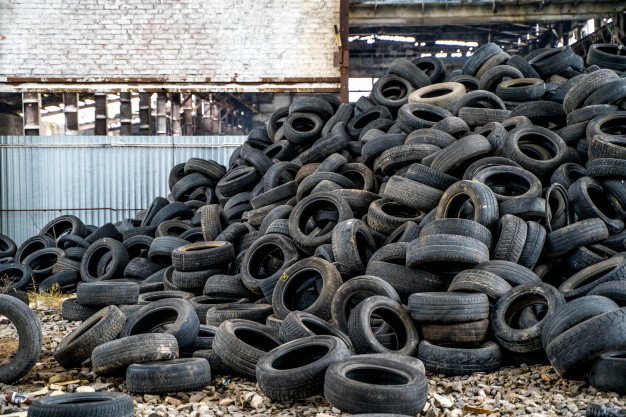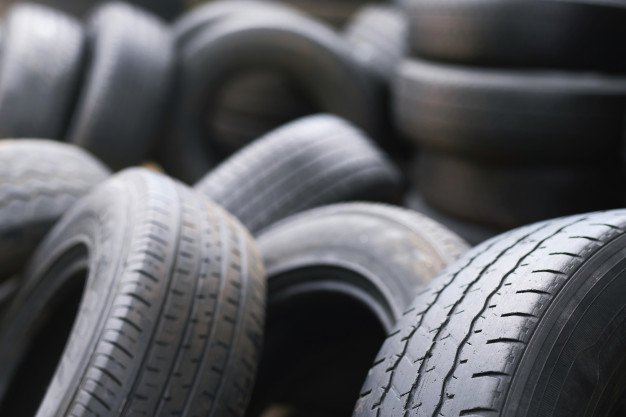What is end-of-life for tyres and tyre recycling
The recycling of tyres also known as the cycling of rubber is a way to reuse the tyres that have undergone wear & tear or damage that are irreparable. Used tyres cause problems as they are nothing but solid waste. They are present in large volumes, are non-biodegradable and are composed of components that are dangerous for the environment. They also are a source of mosquitoes and rodents that cause diseases.
The process of recycling

Collecting used or worn-out tyres
Used tyres might be accumulated by individuals or companies who are into the business of tyre recycling. Once collected, they are transferred to the recycling plants to carry out their processing. The tyres might be reused as mulch or for strength training.
Processing of the whole tyre
At first, the tyres are broken down and cut into small pieces. This process is carried out to reduce their volume to be able to handle them easily. Tyre shredders help in carrying out this procedure using shafts that counter-rotate.
The systems involved in the processing of tyres:
Mechanical systems
In this case, used car tyres are grinded into small pieces with the help of a mechanical system.
Cryogenic systems
The tyres, in this case, are frozen at low temperatures to make them break down into small chips of different sizes. These shreds are then cooled with liquid nitrogen. Now that the rubber becomes brittle, it passes through a hammer mill to further break the rubber into tiny particles. The steel components are removed with the help of magnets and fibres and air classifiers. The recycled rubber is thus ready to be used for other purposes.
Steel Liberation Stage
The shreds of tyres procured from the first step are further processed and made ready to undergo the process of separation of the wire from the rubber. This is known as coarse screening and fibre separation. The steel wires present in tyres provide strength, resilience and versatility to the tyres. These wires are taken out, reused and supplied to the rolling mills to produce new steel. The rest of the rubber is utilised in more ways than one.
Screening and Milling Stage

This process involves careful screening to check that no wires or any other kind of unwanted substances in the different sizes of rubbers are present in the mix. Extra-large pieces of rubber and unwanted pieces of rubber are removed.
Cleaning Stage
The rubber obtained from the above processes is packed and transported to various factories which utilise rubber as raw material, like shoe manufacturers etc.
Multiple products are derived from a used set of tyres.

- Are burnt for fuel: Huge numbers of scraped tyres are recycled as fuel, which is known as Tyre Derived Fuel (TDF). In this process, any type of tyre can be used, be it summer, winter or all-season tyre. As a matter of fact, TDF is the oldest technique for recycling tyres to produce excellent quality fuel. In the case of normal tyres, fuel heat that can be generated is around 13000 to 15000 Btu/lb.
- Construction materials: Houses can be built by worn-out rubber by mixing them with concrete. They are used in applications of civil engineering like subgrade fill. They help in the reduction of the collision, wave action, blasting mats and rainwater run-off as barriers between roadways and residences.
- Apparel Products: They can be used in producing sandals.
- Application in civil engineering: They are utilised as landfill gas trench collection walls or backfills for the repair of a landslide along the road or vibration minimising material for railway lines.
- Ground and Crumb Rubber: They are used to pave projects or moulded in products like rubber flooring, padding of the carpet, sidewalks, bumpers of docks etc.
- Carbon source: They are used as a fuel source in steel mills. This enables the mills to be eco-friendly.
Tyres are produced and discarded in high volumes every year. However, they could pose to be a threat to the environment and the surroundings due to their heavy metal content. They also tend to leach toxins in the groundwater causing lots of issues. Dumped tyres have been known to become home to animals and insects causing health problems for humans. Hence, it becomes crucial to have these used or discarded tyres recycled to prevent any solid waste deposition, releasing toxins in the air. This prevents any health problems and promotes a healthy environment.





